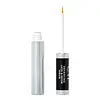What's inside
What's inside
 Key Ingredients
Key Ingredients

 Benefits
Benefits

 Concerns
Concerns

No concerns
 Ingredients Side-by-side
Ingredients Side-by-side

Water
Skin ConditioningGlycerin
HumectantPolysorbate 20
EmulsifyingHydroxyethylcellulose
Emulsion StabilisingSodium Hyaluronate
HumectantLarix Europaea Wood Extract
HumectantCamellia Sinensis Leaf Extract
AntimicrobialRicinus Communis Seed Oil
MaskingPanax Ginseng Root Extract
EmollientDisodium EDTA
Sodium Metabisulfite
AntioxidantGlycine
BufferingSodium Nitrate
SoothingZinc Chloride
AntimicrobialGlyoxal
AntimicrobialTromethamine
BufferingPhenoxyethanol
PreservativeCaprylyl Glycol
EmollientEthylhexylglycerin
Skin ConditioningWater, Glycerin, Polysorbate 20, Hydroxyethylcellulose, Sodium Hyaluronate, Larix Europaea Wood Extract, Camellia Sinensis Leaf Extract, Ricinus Communis Seed Oil, Panax Ginseng Root Extract, Disodium EDTA, Sodium Metabisulfite, Glycine, Sodium Nitrate, Zinc Chloride, Glyoxal, Tromethamine, Phenoxyethanol, Caprylyl Glycol, Ethylhexylglycerin
Water
Skin ConditioningButylene Glycol
HumectantHydroxyethylcellulose
Emulsion StabilisingSodium Hyaluronate
HumectantOctapeptide-2
Skin ConditioningCopper Tripeptide-1
Skin ConditioningSh-Polypeptide-1
Skin ConditioningCucurbita Pepo Seed Extract
Skin ConditioningGlycine Soja Oil
EmollientGlycerin
HumectantHydrogenated Lecithin
EmulsifyingRhizobian Gum
Biotin
AntiseborrhoeicDicalcium Phosphate
AbrasivePanthenol
Skin ConditioningPantethine
EmollientDipotassium Glycyrrhizate
HumectantAllantoin
Skin ConditioningSea Water
HumectantAlcohol
AntimicrobialIsopropyl Cloprostenate
Phenoxyethanol
PreservativeDisodium EDTA
Citric Acid
BufferingChlorphenesin
AntimicrobialSorbic Acid
PreservativeSodium Oleate
CleansingPotassium Sorbate
PreservativeSodium Hydroxide
BufferingWater, Butylene Glycol, Hydroxyethylcellulose, Sodium Hyaluronate, Octapeptide-2, Copper Tripeptide-1, Sh-Polypeptide-1, Cucurbita Pepo Seed Extract, Glycine Soja Oil, Glycerin, Hydrogenated Lecithin, Rhizobian Gum, Biotin, Dicalcium Phosphate, Panthenol, Pantethine, Dipotassium Glycyrrhizate, Allantoin, Sea Water, Alcohol, Isopropyl Cloprostenate, Phenoxyethanol, Disodium EDTA, Citric Acid, Chlorphenesin, Sorbic Acid, Sodium Oleate, Potassium Sorbate, Sodium Hydroxide
 Reviews
Reviews

Ingredients Explained
These ingredients are found in both products.
Ingredients higher up in an ingredient list are typically present in a larger amount.
Disodium EDTA plays a role in making products more stable by aiding other preservatives.
It is a chelating agent, meaning it neutralizes metal ions that may be found in a product.
Disodium EDTA is a salt of edetic acid and is found to be safe in cosmetic ingredients.
Learn more about Disodium EDTAGlycerin is already naturally found in your skin. It helps moisturize and protect your skin.
A study from 2016 found glycerin to be more effective as a humectant than AHAs and hyaluronic acid.
As a humectant, it helps the skin stay hydrated by pulling moisture to your skin. The low molecular weight of glycerin allows it to pull moisture into the deeper layers of your skin.
Hydrated skin improves your skin barrier; Your skin barrier helps protect against irritants and bacteria.
Glycerin has also been found to have antimicrobial and antiviral properties. Due to these properties, glycerin is often used in wound and burn treatments.
In cosmetics, glycerin is usually derived from plants such as soybean or palm. However, it can also be sourced from animals, such as tallow or animal fat.
This ingredient is organic, colorless, odorless, and non-toxic.
Glycerin is the name for this ingredient in American English. British English uses Glycerol/Glycerine.
Learn more about GlycerinHydroxyethylcellulose is used to improve the texture of products. It is created from a chemical reaction involving ethylene oxide and alkali-cellulose. Cellulose is a sugar found in plant cell walls and help give plants structure.
This ingredient helps stabilize products by preventing ingredients from separating. It can also help thicken the texture of a product.
This ingredient can also be found in pill medicines to help our bodies digest other ingredients.
Learn more about HydroxyethylcellulosePhenoxyethanol is a preservative that has germicide, antimicrobial, and aromatic properties. Studies show that phenoxyethanol can prevent microbial growth. By itself, it has a scent that is similar to that of a rose.
It's often used in formulations along with Caprylyl Glycol to preserve the shelf life of products.
Sodium Hyaluronate is hyaluronic acid's salt form. It is commonly derived from the sodium salt of hyaluronic acid.
Like hyaluronic acid, it is great at holding water and acts as a humectant. This makes it a great skin hydrating ingredient.
Sodium Hyaluronate is naturally occurring in our bodies and is mostly found in eye fluid and joints.
These are some other common types of Hyaluronic Acid:
Learn more about Sodium HyaluronateWater. It's the most common cosmetic ingredient of all. You'll usually see it at the top of ingredient lists, meaning that it makes up the largest part of the product.
So why is it so popular? Water most often acts as a solvent - this means that it helps dissolve other ingredients into the formulation.
You'll also recognize water as that liquid we all need to stay alive. If you see this, drink a glass of water. Stay hydrated!
Learn more about Water